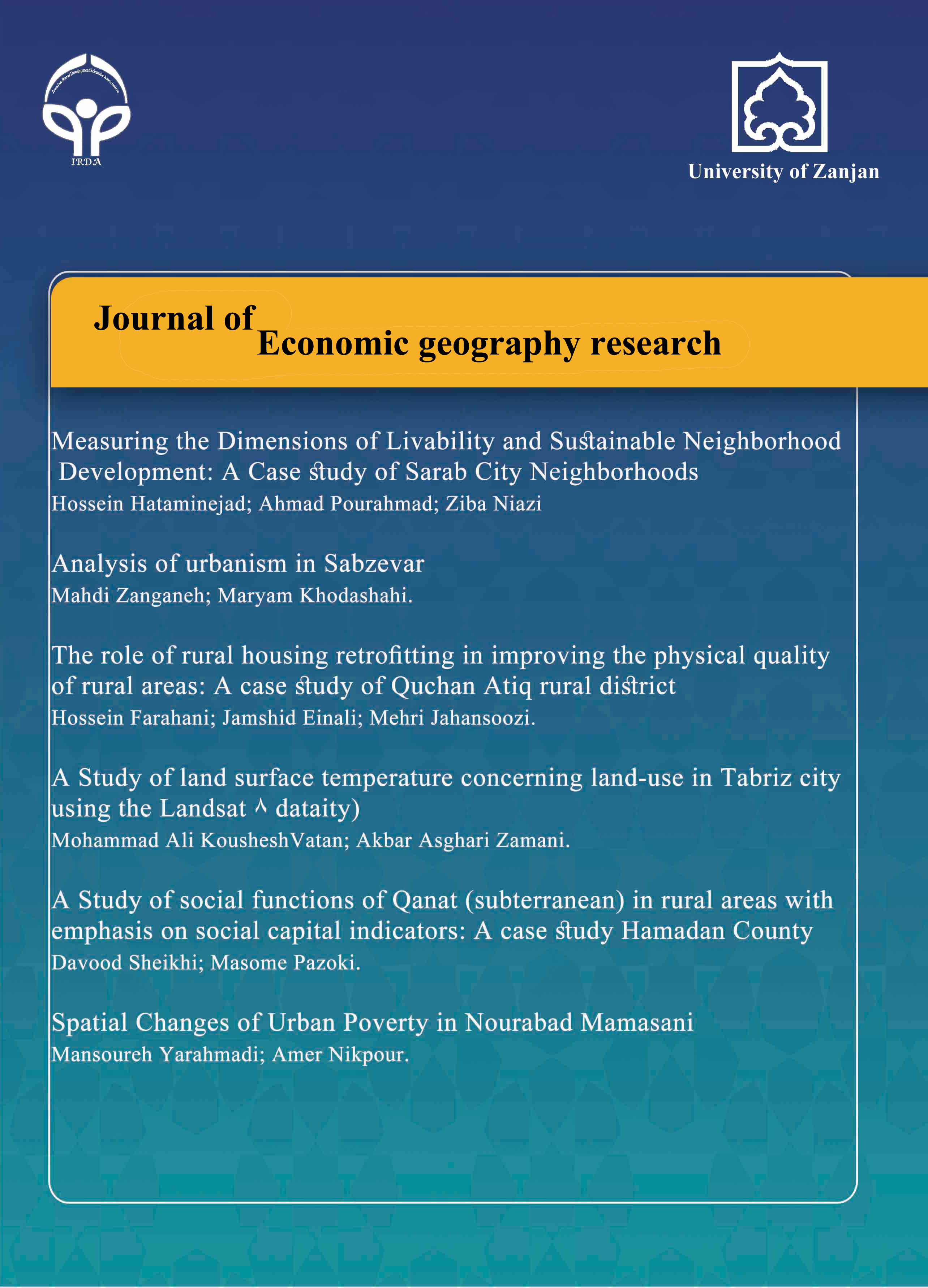Document Type : Research Article
Authors
1 Associate Professor, Department of Geography and Urban Planning, Faculty of Geography, University of Tehran, Tehran, Iran.
2 Professor, Department of Geography and Urban Planning, Faculty of Geography, University of Tehran, Tehran, Iran.
3 Master student of Geography and Urban Planning, Faculty of Geography, University of Tehran, Tehran, Iran.
Abstract
Following the change in conditions and factors affecting urban development in recent times, man-made residential neighborhoods have a special place in the formation of cities and their sustainable development. Sustainable urban development, including recent theories and policies and is considered current, has occupied a major part of the urban planning literature of recent years. But the recent theory at the local scale has not yet been properly explained and can be considered as the subject of research, sustainable development at the residential scale. Viability Improves the quality of urban spaces in modern cities while humanizing them as much as possible. The present study tries to assess the situation of diversity and development in residential neighborhoods as one of the most basic pillars of sustainable urban development. In this article, descriptive-analytical method has been used. To measure the diversity and development of neighborhoods and urban livability indicators, a qualitative model with 3 general indicators (diversity in construction, diversity in use and diversity in users) and 69 variables has been designed and used. Then, for data analysis and final decision making, non-compensatory multi-criteria decision making (MADM) method of Maximin and Maximax was used. The results show that neighborhoods 12, 8, 6, 2, 9, 1, 3, 11, 10, 7, 5, and 4 have the desired status of diversity and development, respectively.
Keywords

